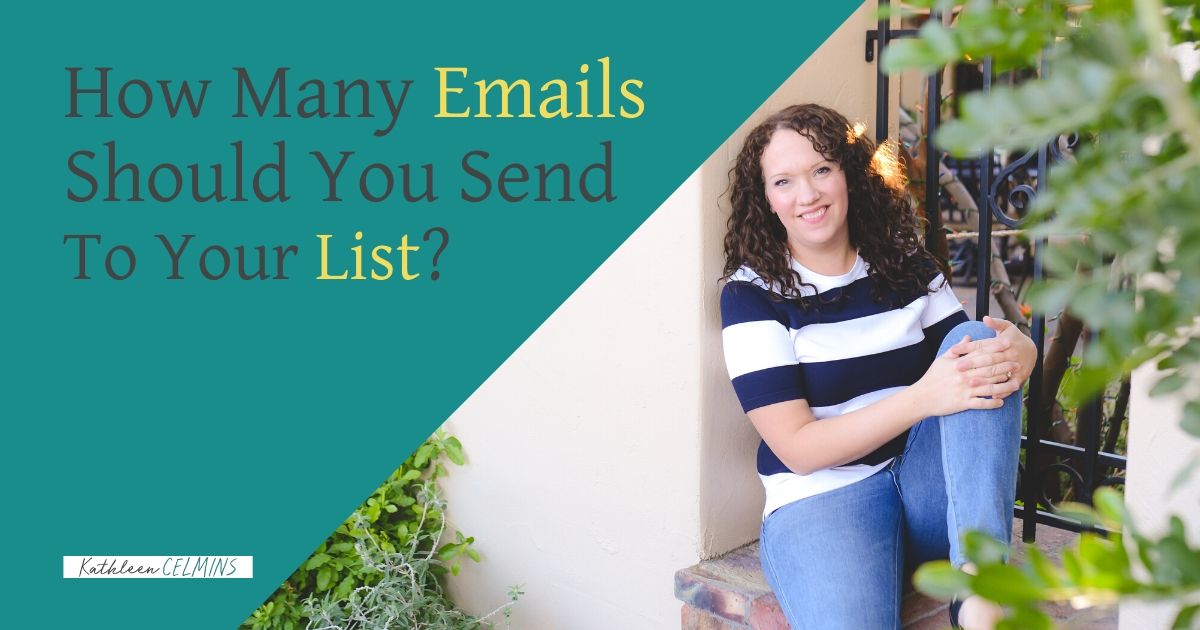Let’s talk about marketing for digital entrepreneurs.
There’s one thing that I keep hearing is questions from creators about how often they should be emailing their list.
A lot of times, this comes from a place of uncertainty, and whether they should be bothering their list at all.
For example, you log into your email after a few days away and you’re immediately overwhelmed.
I have seen this happen over and over and over again, especially around high email times like Black Friday.
Somebody says, “Oh, I don’t want to bother people.” But again, if you’re not emailing people about your Black Friday deal, they’re going to spend their money on other people.
Other digital marketers say things like, “Don’t send more than two emails a day.”
That causes confusion and then creators begin to question even sending emails.
I see so many frustrated clients who say, “I don’t know. Should I even ever email people once I get their email addresses?
And on the other hand, there are people who are emailing more than once a day!
The truth is somewhere in between, right?
I believe that you should be communicating with your list every week unless you’re launching something, then it should be more often.
It’s your emails that connect your new offer with your new customer.
When promoting, you should be sending emails once a day for 7 to 10 days, depending on what you’re selling, depending on what’s going on.
For example, I have the Launch Accelerator, which launches the beginning of June. If I don’t keep reminding my list about that, especially people who are new from my last webinar, they’ll forget.
If I’m not emailing them, telling them about this thing, especially because there is a deadline and a timeline and everything, I’m going to miss new opportunities to help people.
There’s real scarcity because we start at the beginning of June, and if people don’t sign up before then, they can’t join us in June.
It’s a live workshop, so I’m doing my list a disservice by not telling them about it or giving them more updates.
I worked with a client who is an excellent communicator but has blank page syndrome when it comes to email.
We pulled all of this strategy together and created a template, so every email has an intro, every email has this, and every email has that, and we just set it up so that even if it doesn’t look like a template, it will help my client quickly write emails.
It doesn’t have to be ten things or somebody else’s format at all. You can make a basic template to make writing emails easier for you.
If you have a template in the back of your mind, then you know what you’re going to say week after week after week, and you’re communicating with people about the things that you believe.
And that brings me to my final point, which is to remember what email is. Email is the medium at which you stay top of mind for your audience. Meaning, if you are a marketer like me, then what you need to do is make sure that your list knows all the things that you can do for them so that when they are thinking about writing a sales page, or sending emails, and they need help, they think of you first.
It’s more important than anything.
That is what email is all about. And it’s not annoying people. People have the right to unsubscribe.
For creators, it may be difficult to transition from telling a story to sending an email that’s like, “Are you going to buy this or not?”
There’s no need to separate the two, though. Your stories can all have a call to action. Every email can have a call to action, and they can be light calls to action, like the following:
- “Hit reply.”
- ”If you’ve ever been in this situation.”
- “Are we connected on Instagram?”
- “Click here to….”
Feel free to include little calls to action in every email.
Not every single email is a sales email, but if you’re not emailing them to help remind them that they’re on a list like yours that will help them, then their money is going to your competitors.
That is the importance of email.
If you want to get templates, scripts, and downloads for your emails, join the Launch Accelerator that’s starting in June.

